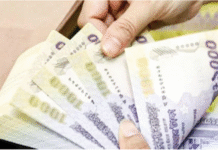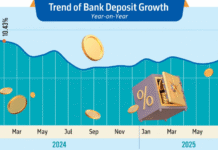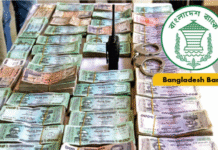The Business Standard 11 June 2020

Bangladesh’s gross public debt will rise to 40.12 percent of GDP in FY21, according to an International Monetary Fund report.
Gross debt will exceed 40 percent for the first time since FY08, the report said. The world was hit by the Great Recession that year.
Bangladesh’s gross public debt is 38.90 percent of GDP in FY20, the IMF said.
It forecasted gross debt for countries around the world – including Bangladesh, India, Nepal, Pakistan, and Sri Lanka – in its recently-published flagship report “Fiscal Monitor – April 2020.”
Gross public debt is all liabilities that require future payment of interest and principal by the government.
Bangladesh’s economy will go through a slump in the current fiscal year due to the Covid-19 outbreak. The economy will not fully recover in the next fiscal year either. To mitigate the effects of Covid-19, the government will adopt an expansionary fiscal policy, which will increase public debt.
The report said due to the Covid-19 pandemic, the world will see sluggish global growth with a low inflation rate as well as a low nominal interest rate. The financial consequences will push up the budget deficit and public debt.
According to the IMF’s “From Stimulus to Consolidation: Revenue and Expenditure Policies in Advanced and Emerging Economies” report in 2010, the debt to GDP ratio should not exceed 40 percent for a long time in emerging and developing economies.
More borrowing to address budget deficit
According to the draft budget of FY2020-21, the budget deficit is expected to be around Tk185,984 crore.
Despite the crisis in the banking sector, the government’s reliance on the sector has been growing.
Of the deficit budget amount, the government wants to borrow Tk84,980 crore from the banking sector, Tk25,000 crore from the non-banking sector, and Tk76,004 crore from foreign sources.
Almost 45.7 percent of total financing is expected to come from the domestic banking sector, while 40.9 percent is expected from foreign sources and 13.4 percent from the non-banking sector.
In the last fiscal year, the government borrowed Tk82,421 crore from the banking sector to meet the budget deficit.
However, the budget deficit is expected to reach 5.8 percent of GDP in the current fiscal year. In the last fiscal year, it was about 5.3 percent of GDP.
Outlook of South Asian countries
In South Asia, only Nepal will maintain gross debt below 40 percent of total GDP in 2021 – around 38.76 percent. Sri Lanka will see the highest gross debt – 92.10 percent of total GDP – followed by Pakistan, 83.35 percent, and India, 73.80 percent.
Sri Lanka, Pakistan and India will see a downward trend of gross debt, while there will be an upward trend in Nepal and Bangladesh.
The IMF also projected that public revenue will be 9.9 percent of total GDP in FY21 for Bangladesh. This will be the first time since FY17 the revenue percentage of total GDP will increase.
Moreover, the general government expenditure will be 15.9 percent of total GDP.









